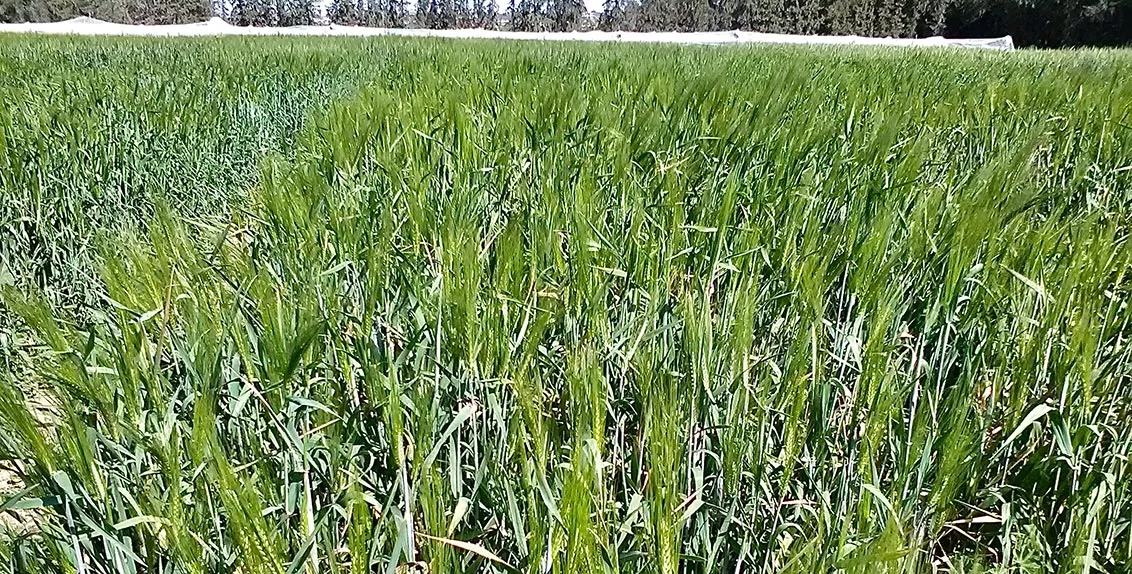Salt-tolerant barley shows promise for boosting farmers’ yields, incomes in Tunisia
25 September 2020
A new study has found that farmers in arid and salt-affected areas of Tunisia can reduce their water costs by 49 percent and yield losses from 70 to 8 percent if they switch from a salt-sensitive local barley variety called Konouz to a salt-tolerant one called Batini from Oman.
The study – which was conducted in three regions of Tunisia, namely Beja (a sub-humid region), Kairouan (a semi-arid region), and Medenine (an arid region) - shows that Batini performed well in salt-affected arid areas when irrigated with water with a salinity level of up to 15 deciSiemens per meter (dS/m).
Led by two ICBA scientists in collaboration with researchers from the National Agronomic Institute of Tunisia, the study used AquaCrop - a crop water productivity model with a salinity module - to evaluate the performance of the two varieties. AquaCrop was developed by the Food and Agriculture Organization of the United Nations (FAO) to estimate water use efficiency and improve irrigation management practices in agriculture.
According to Dr. Asad Qureshi, a senior scientist in irrigation and water management at ICBA and one of the lead authors of the study: "Freshwater scarcity and other abiotic factors such as climate change and soil salinity are affecting crop production in the Near East and North Africa (NENA) region where barley is one of the main staple food crops. Therefore, introducing salt-tolerant varieties of crops like barley can substantially help farmers to increase their yields and incomes. The salt-tolerant barley variety used for the study was selected after years of evaluation and field analysis by ICBA scientists. The study also highlighted the importance and strength of simulation models to better understand the dynamics of salinity development under different water salinity and environmental conditions."
Dr. Zied Hammami, a post-doctoral fellow and a research agronomist at ICBA, added: "In this study, we evaluated and calibrated the AquaCrop model using field data collected during two cropping seasons (2012–14), then the calibrated model was used to develop different scenarios for irrigation with saline water from 5, 10 to 15 dS/m. The scenario results in the case of the salt-sensitive variety indicated about 70 percent reductions in biomass and grain yield in the arid region. Under the same environmental conditions, biomass and yield reductions for the salt-tolerant variety were only 16 percent and 8 percent respectively. We also found that the irrigation cost in salt-affected areas can be reduced by 40, 38, and 49 percent by cultivating the salt-tolerant variety under salinity levels of 5, 10 and 15 dS/m respectively. Moreover, in arid areas with a salinity level of 15 dS/m, Batini can produce 2 tonnes of grain per hectare. In contrast, Kounouz is limited to about 0.7 tonnes per hectare."
Since barley is a source of stable farm income, it has considerable economic importance in the NENA region. The crop is used for feed, food and malt production; however, its production is constrained by abiotic factors such as arid climate, low and erratic rainfall, and soil and water salinity.
The study is intended to contribute to Tunisia’s efforts to boost barley production in arid and salt-affected areas where crops are irrigated with saline groundwater.











